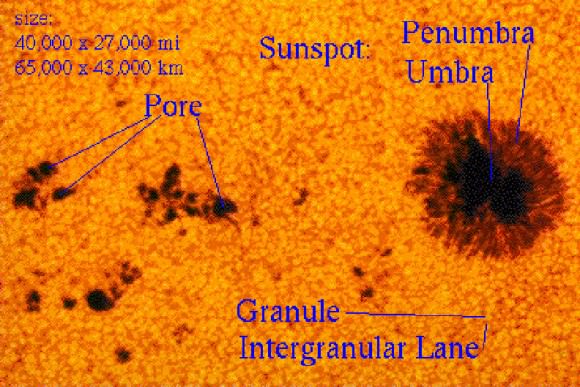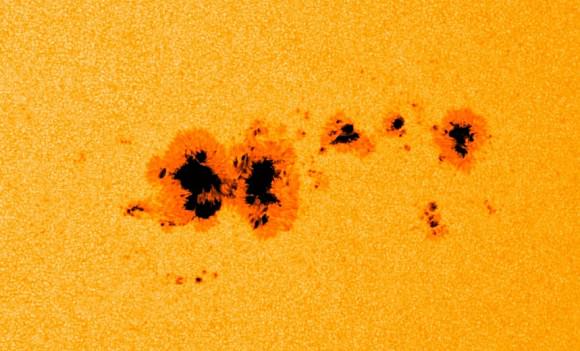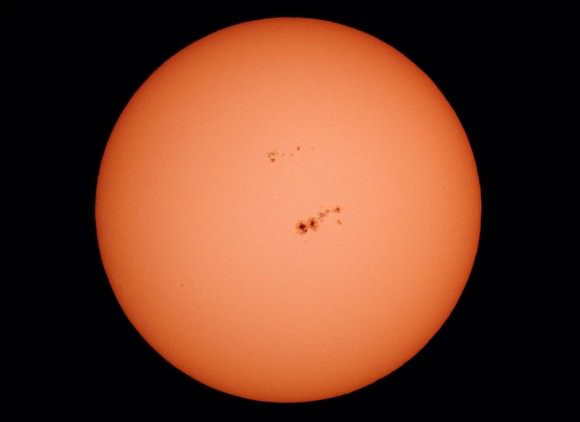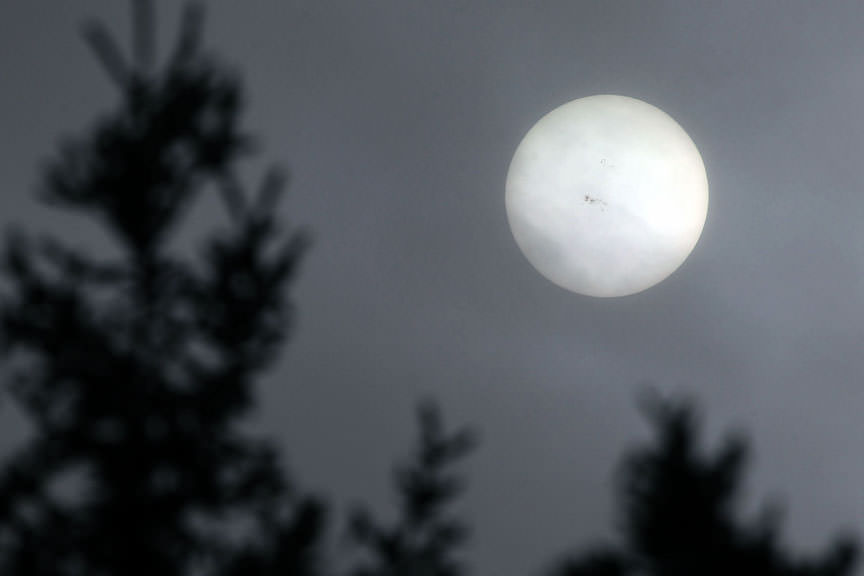What a crazy sunspot cycle. Weeks go by with only a few tiny spots freckling the sun, then all at once a monster group big enough to swallow 10 Earths rounds the eastern limb and we’re back in business. I’m happy to report we’ve got another behemoth snapping and crackling with M-class (moderately strong) flares – Active Region 1967, a hunk-a-hunk of burnin’ funk that rounded the solar limb a week ago.
NOAA weather forecasters predict an 80% chance of continued M-flares and a 50% chance over the next 3 days for considerably more powerful X-class flares. This sunspot group has a delta classification magnetic field, the Facebook equivalent of “It’s complicated”.

Sunspots have two parts: a dark core (or cores) called an umbra surrounded by a paler skirt of magnetic energy, the penumbra. They can look impressive like this one, but it’s hard to call a sunspot a “thing”. It’s really more of a locale on the sun’s bright white photosphere where bundles of powerful magnetic energy bob up from below the surface and insulate a region of the sun’s fiery hydrogen gas from the rest of the flaming globe.
We’re talking insulate as in staying cool. While the photosphere cooks at around 11,000 degrees Fahrenheit, sunspots are some 3,000 degrees cooler. That’s why they appear dark to the eye. If you could rip them away from the sun and see them alone against the sky, they’d be too bright to look at safely.

A delta-class spot group has umbrae of both polarities, north and south, corralled within the penumbra. Like bringing opposite poles of a two magnets so close they snap together, something similar can happen inside delta-class groups. Only instead of a snap, a titanic thermonuclear explosion called a flare goes kaboom.The biggest flares release the equivalent of a billion hydrogen bombs.

We thank our lucky stars for Earth’s iron heart, which generates our protective magnetic shield, and the 93 million miles that separate us from the sun. AR 1967 has paraded right in front of our noses as it rotated with the sun. Yesterday it squarely faced the Earth – a good thing when it comes to the particle blasts that fire up the northern lights. Let’s hope it showers us with a magnetic goodness in the coming days. I really miss seeing the aurora. You too? NOAA space weather forecasters are calling for a 25% chance of auroras in Arctic latitudes overnight Feb. 4-5. We at mid-latitudes will try to be patient.

